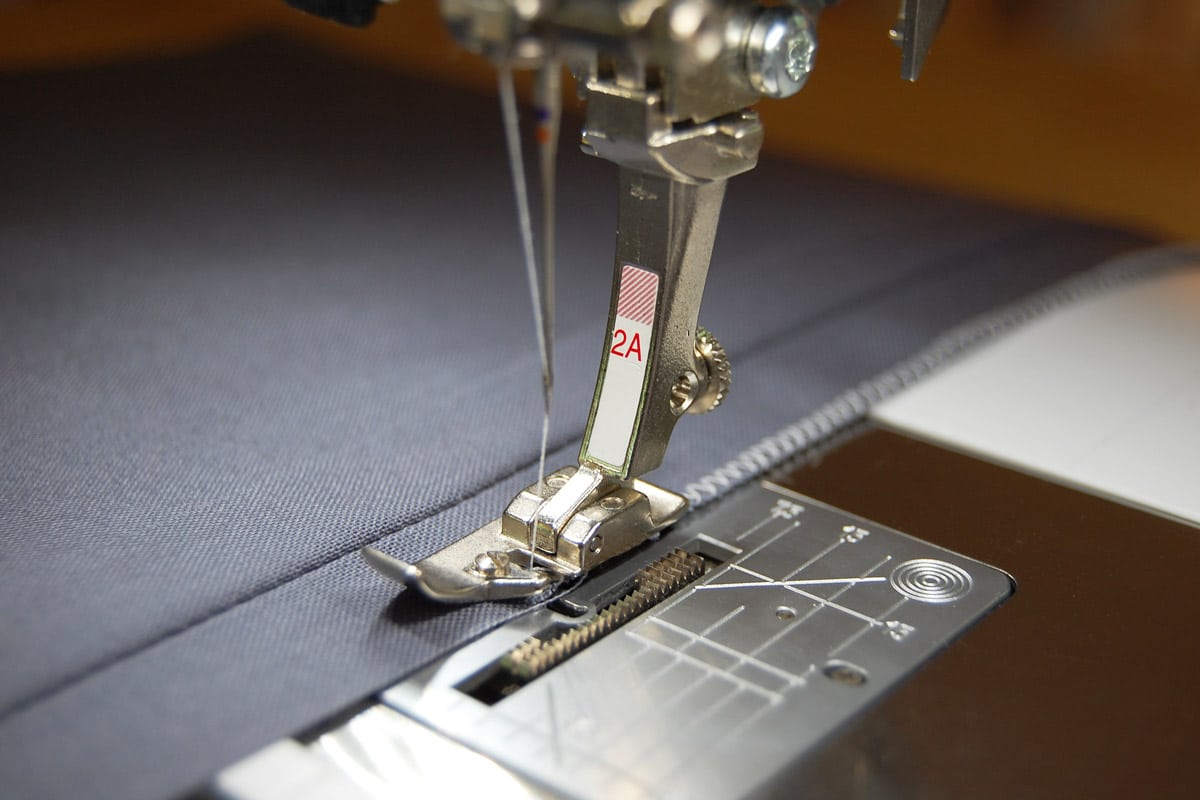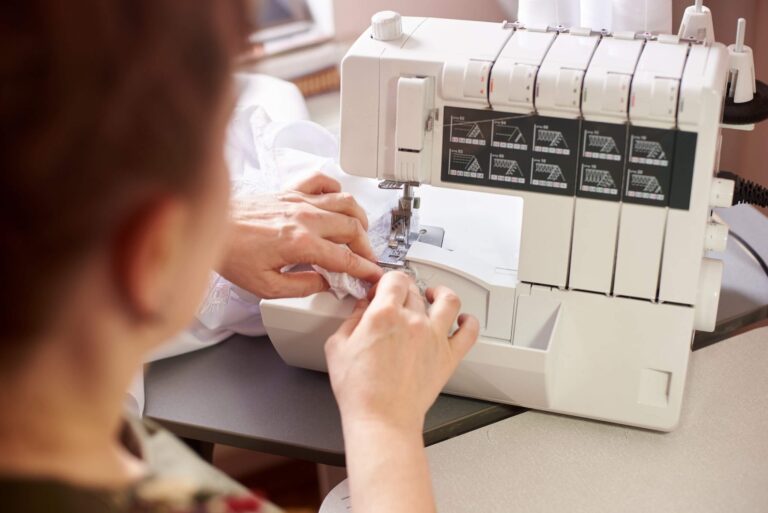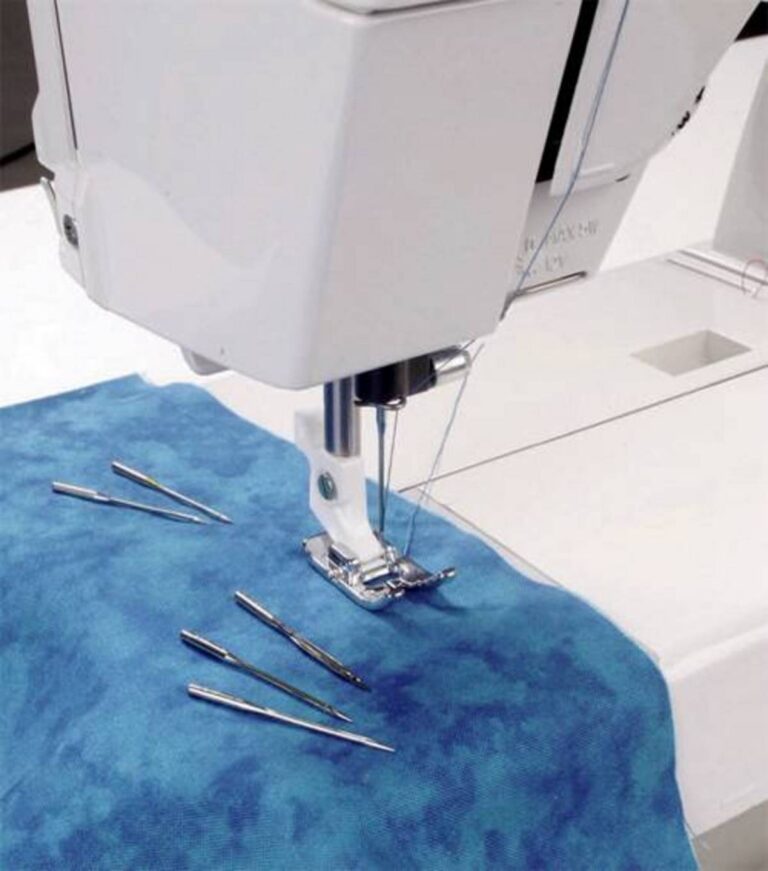Simple Seaming Techniques
Stitching two pieces of fabric together using a straight stitch creates the simplest of seams.
If you’re working with a commercial sewing pattern, most seams are stitched with a 5/8″-
wide seam allowance (meaning the stitching is 5/8″ from the fabric edge), though some
patterns use narrower seam allowances. Always check the guidesheet for specifics. The
seam allowance width is the space from the cut edge of the fabric piece to the stitching or
seaming line.
Straight Seams
To stitch a straight seam, pin the matching project pieces right sides together, matching any notches, clips, dots or other pattern markings.
Pin at regular intervals and perpendicular to the cut edges. Position pins about 2″ to 3″ apart to keep the fabric from shifting.
Begin stitching at the cut end of the seamline, backstitch 1/4″ to anchor the seam. Stitch forward to the end of the seam and backstitch to secure .
Corner Seams
To stitch a corner seam, follow the directions above, but as you near the corner, stop 5/8″ from the corner (or whatever the seam allowance width is) leaving the needle down in the fabric. Lift the presser foot and pivot the fabric, realigning the new seam allowance edges with the seam guide marking on the machine.
On acute or sharp points, such as shirt collars, take one to three stitches diagonally across the corner to allow some room for seam allowances turning inside. Use one stitch on lightweight fabrics and three on heavyweight fabrics.
Lower the presser foot and stitch along the second side of the corner, keeping an even seam allowance width.
allowances to eliminate a visible ridge on the project right side. If all edges “drop off” at the same width, it’s easy to get a noticeable ridge, especially during pressing.
Grading provides a gradual slope of the enclosed seam edges .
Exposed Seams
Exposed straight seams are usually pressed open flat, and depending on the type of fabric used, some finish may be needed to keep the seam allowance edges from raveling. Edge-finishing options include cutting the seam edges with pinking shears, zigzagging, overcasting, binding or serging.
Enclosed Seams
Enclosed seams do not need a seam finish, but they must be handled differently than exposed seams.
To reduce bulk, trim the enclosed seam allowances from their 5/8″ original width, but trim each seam allowance edge at a different width—a process called grading.
The seam allowance that will be closest to the outside of the garment/project should be the longest, followed by narrower
widths for each successive seam allowance.
There will always be at least two seam allowances, but if there is a separate collar and/or interfacing layer(s), there will be more. Stagger the width of the seam
Stitching two pieces of fabric together using a straight stitch creates the simplest of seams.
If you’re working with a commercial sewing pattern, most seams are stitched with a 5/8″- wide seam allowance (meaning the stitching is 5/8″ from the fabric edge), though some patterns use narrower seam allowances. Always check the guidesheet for specifics.
The seam allowance width is the space from the cut edge of the fabric piece to the stitching or seaming line.
Curved Seams
Necklines, armholes, princess seams and other curved areas require an additional step in the seaming process— clipping or notching, depending on the shape of the curve.
For inward or concave curves, clip into the seam allowances at regular intervals to allow the fabric spread and lie flat. Leave about 1/8″ of the seam allowance width unclipped to avoid weakening the seam .
For outward or convex curves, cut out notches in the seam allowance width to allow the fabric to lie flat without bubbling when the seam is turned right side out. Notch (cut away small wedges of the fabric) into the seam allowance at regular intervals to remove the fabric, but always leave 1/8″ intact at the seamline to avoid weakening the seam .
Corners
On enclosed corners, such as collar points or front facing edges, you need to eliminate seam allowance bulk at the point so that when the project is turned right side out, the corner will lie smooth and flat without bulges.
Trim the corner seam allowances diagonally, close to the stitching, and taper on either side.
The sharper the corner is, the wider the tapered trim area should be to reduce bulk .
Princess Seams
A princess seam joins one inward
curve and one outward curve, adding fullness to the seam instead of having a dart in the same location.
Joining opposing curves requires extra care.
Before joining princess seams, staystitch the outward curve 1/2″ from the cut edge; then clip to the stitching.
Place the cut edges together with the clipped seam allowance on top, allowing the clips to spread as needed to match the curve underneath.
After the seam is stitched, notch the inward-curve seam allowance to allow the seam allowances to spread.
Press the seam open over a pressing ham or other
curved surface.
Thread Tensions
Before stitching any seam, stitch a test seam on two layers of fabric; use scraps of the project fabric. Examine the stitching on both sides of the fabric. If bobbin thread is visible on the top, reduce the needle thread tension slightly. If needle thread is visible on the bottom, increase the needle tension slightly.
Related Posts
Discover relevant articles, tutorials, and tips to improve your skills and explore new techniques.
Stay inspired and connected to our embroidery community.






